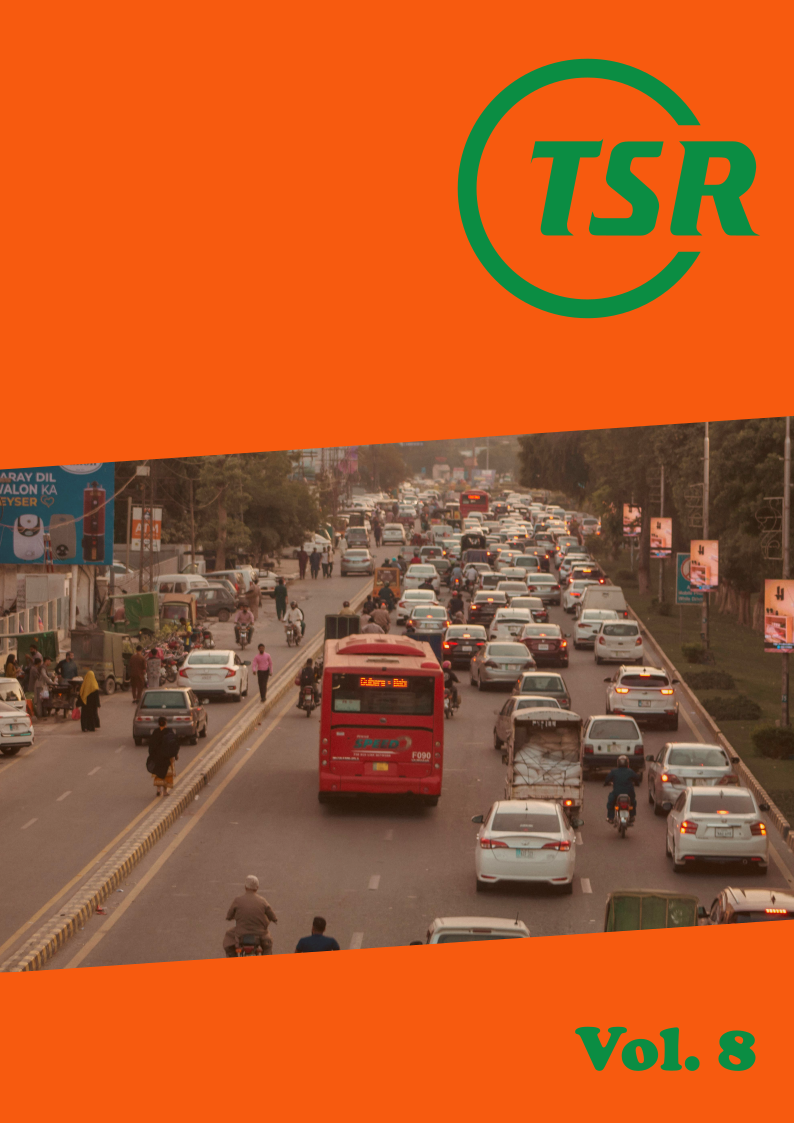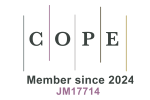Maturity measurement in road traffic injury prevention
DOI:
https://doi.org/10.55329/uvfc1655Keywords:
frameworks, maturirty, models, Safe SystemAbstract
Road traffic related death and injury continues to be a major challenge globally. Unsafe road use is particularly evident in low- and middle-income countries while also being a growing concern for private sector organisations. The Safe System approach is recognized internationally as the leading approach to improving road safety and previous work has codified the essential management functions and interventions evident in its successful implementation. Tracking the development of Safe System adoption within the public and private sectors is of interest for several reasons. This paper presents recent development and use of road safety maturity frameworks and discusses the utility of these approaches for road safety practitioners and researchers.
Downloads
References
Academic Expert Group, (2019), 'Saving lives beyond 2020: The next steps', Recommendations for the 3rd Global Ministerial Conference on Road Safety.
Amador, L., C. Willis (2014), 'Demonstrating a correlation between the maturity of road safety practices and road safety incidents', Traffic Injury Prevention, 15(6), 591–597. DOI: https://doi.org/10.1080/15389588.2013.845753
Belin, M.-Å., P. Tillgren, E. Vedung (2012), 'Vision Zero: A road safety policy innovation', International Journal of Injury Control and Safety Promotion, 19(2), 171–179. DOI: https://doi.org/10.1080/17457300.2011.635213
Bliss, T., J. Breen (2013), 'Road safety management capacity reviews and Safe System projects', Global Road Safety Facility.
Breen, J., K. McMahon, E. Robertson, E. Salter, C. Stephenson, P. Thomas (2018), 'Road safety management capacity review', Department for Transport, 105990/12.
Campsall, D., T. Fosdick, M. Kamran, S. Scott (2022), 'Measuring readiness for Safe System delivery: a Safe System Cultural Maturity Model', Road Safety on Five Continents (RS5C), Grapevine, TX, USA, 10–12 October 2022.
CCMTA, (2016), 'Canadian road safety strategy 2025', Canadian Council of Motor Transport Administrators.
Cooper, M. D. (2000), 'Towards a model of safety culture', Safety Science, 36(2), 111–136. DOI: https://doi.org/10.1016/S0925-7535(00)00035-7
Darnton, A., J. Horne (2013), 'Influencing behaviours—moving beyond the individual: ISM user guide', The Scottish Government, DPPAS13977 (06/13).
Edvardsson Björnberg, K., S. O. Hansson, M.-Å. Belin, C. Tingvall (2020), The Vision Zero Handbook. Theory, Technology and Management for a Zero Casualty Policy, (Cham, Switzerland: Springer). DOI: https://doi.org/10.1007/978-3-030-23176-7
Elvik, R. (2000), 'How much do road accidents cost the national economy?', Accident Analysis & Prevention, 32(6), 849–851. DOI: https://doi.org/10.1016/S0001-4575(00)00015-4
Elvik, R., T.-O. Nævestad (2023), 'Does empirical evidence support the effectiveness of the Safe System approach to road safety management?', Accident Analysis & Prevention, 191, 107227. DOI: https://doi.org/10.1016/j.aap.2023.107227
Espiga, D. (2019), 'Introducing a Road Safety Maturity Model', CEPA Mobility Care.
Etika, A. (2018), 'Developing safe system road safety indicators for the UK', Parliamentary Advisory Council for Transport Safety.
Filho, A. P. G., P. Waterson (2018), 'Maturity models and safety culture: A critical review', Safety Science, 105, 192–211. DOI: https://doi.org/10.1016/j.ssci.2018.02.017
Fleming, M. (2001), 'Safety culture maturity model', Health and Safety Executive (Sheffield, UK), OTO-2000/049.
Fosdick, T., D. Campsall, M. Kamran, S. Scott (2024), 'Creating a cultural maturity model to assess Safe System readiness within road safety organisations', Journal of Road Safety, 35(1), 52–64. DOI: https://doi.org/10.33492/JRS-D-24-1-2125507
Hudson, P., D. Parker, R. Lawton, W. L. G. Verschuur, G. C. van der Graaf, J. Kalff (2000), 'The Hearts and Minds Project: Creating intrinsic motivation for HSE', SPE International Conference on Health, Safety and Environment in Oil and Gas Exploration and Production, Stavanger, Norway, 26–28 June 2000. DOI: https://doi.org/10.2118/61095-MS
iRAP, (2021), 'Road safety toolkit: Crash costing', International Road Assessment Programme.
ITF, (2022), 'The Safe System approach in action', International Transport Forum (Paris, France).
ITF, (2022), 'Road safety annual report 2022', International Transport Forum (Paris, France).
ITF, (2016), 'Zero road deaths and serious injuries: Leading a paradigm shift to a Safe System', International Transport Forum (Paris, France).
ITF, (2008), 'Towards zero: Ambitious road safety targets and the Safe System approach', International Transport Forum (Paris, France).
ITF, (n/d), 'Advancing the Safe System working group', International Transport Forum (Paris, France).
Jacobs, G., A. Aeron-Thomas, A. Astrop (2000), 'Estimating global road fatalities', Transport Research Laboratory Report (Crowthorne, UK), TRL report 445.
Job, R. F. S., L. W. Mbugua (2020), 'Road crash trauma, climate change, pollution and the total costs of speed: Six graphs that tell the story', Global Road Safety Facility, GRSF Note 2020.1.
Johansson, R. (2009), 'Vision Zero: Implementing a policy for traffic safety', Safety Science, 47(6), 826–831. DOI: https://doi.org/10.1016/j.ssci.2008.10.023
NZTA, (n/d), 'The Safe System approach to road safety', NZ Transport Agency Waka Kotahi.
OECD, (2006), 'The challenge of capacity development: Working towards good practice', Organisation for Economic Cooperation and Development, DCD/DAC/GOVNET(2005)5/REV1.
Small, M., P. Jordan, M. Anyala, D. Shelton, R. Stapleton (2023), 'Assessing the maturity of national road safety management systems', Asian Development Bank, Sustainable Development Working Paper Series, No 85. DOI: https://doi.org/10.22617/WPS230159-2
Turner, B., S. Job, S. Mitra (2021), 'Guide for road safety interventions: Evidence of what works and what does not work', Global Road Safety Facility | The World Bank. DOI: https://doi.org/10.1596/35176
UNRSF, (2018), 'Global framework plan of action for road safety', United Nations Road Safety Trust Fund.
Wallbank, C., S. B. Helman, B. But (2021), 'How many road deaths is too many? The challenge of meeting road safety targets', Transport Research Laboratory (Wokingham, UK).
Wegman, F., H. Y. Berg, I. Cameron, C. Thompson, S. Siegrist, W. Weijermars (2015), 'Evidence-based and data-driven road safety management', IATSS Research, 39(1), 19–25. DOI: https://doi.org/10.1016/j.iatssr.2015.04.001
Wegman, F., A. Dijkstra, G. Schermers, P. Van Vliet (2006), 'Sustainable Safety in the Netherlands: Evaluation of national road safety program', 1969(1), 72–78. DOI: https://doi.org/10.1177/0361198106196900110
Weijermars, W., F. Wegman (2011), 'Ten years of sustainable safety in the Netherlands: an assessment', Transportation Research Record, 2213(1), 1–8. DOI: https://doi.org/10.3141/2213-01
Welle, B., A. B. Sharpin, C. Adriazola-Steil, A. Bhatt, S. Alveano, M. Obelheiro, C. T. Imamoglu, S. Job, M. Shotten, D. Bose (2018), 'Sustainable and safe: A vision and guidance for zero road deaths', World Resources Institute | Global Road Safety Facility.
Westrum, R. (1993), 'Cultures with requisite imagination', in Wise, J. A., V. D. Hopkin, P. Stager (eds.), Verification and validation of complex systems: Human factors issues, (Berlin, Germany: Springer). DOI: https://doi.org/10.1007/978-3-662-02933-6_25
WHO, (2023), 'Global status report on road safety', World Health Organisation.
WHO, (2021), 'Global plan: Decade of action for road safety 2021–2030', World Health Organization.
WHO, (2017), 'Save LIVES: A road safety technical package', World Health Organization.
WHO, (2011), 'Global plan: Decade of action for road safety 2011–2020', World Health Organization.
Wijnen, W., H. Stipdonk (2016), 'Social costs of road crashes: An international analysis', 96, 97–106. DOI: https://doi.org/10.1016/j.aap.2016.05.005
Published
How to Cite
Issue
Section
License
Copyright (c) 2024 Henk Stipdonk, Letty Aarts, Dan Campsall, Laurent Carnis, Veronique Feypell, Tanya Fosdick, David Shelton, Martin Small, Anna Vadeby

This work is licensed under a Creative Commons Attribution 4.0 International License.
















